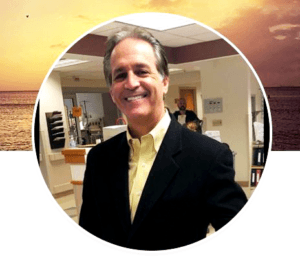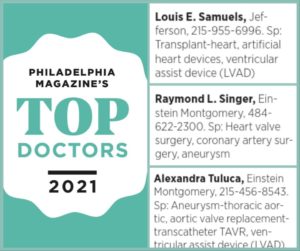Medical-Legal Counseling
This is a very challenging issue. Over the past 20 years, I have served a medical expert on dozens of medical malpractice cases and I have reviewed the charts on dozens more potential lawsuits that were either never pursued or dropped after “discovery” of the evidence.
Patients and families must realize that not every bad outcome implies negligence. Indeed, all operations and procedures have risk. Your surgeon should outline these risks in what we refer to as “Informed Consent.” There are, of course, instances when informed consent is not adequately provided and/or a complication occurs because the standard of care was not met –that is, because the care provided was “below the standard of care.” When this occurs, I do believe that the patient has the right to be reimbursed for their injuries, especially for loss of income due to being out of work.
One of the major debates with liability reform has to do with what is known as “non-economic damages.” Basically, this area is for “pain and suffering.” No doubt, patients should be entitled to a reasonable amount of compensation for pain and suffering. The problem is that in some lawsuits the non-economic damages can be in the range of tens of millions of dollars even when the economic damages were relatively small.
There simply is not an endless amount of money available for liability insurance. Most physicians are fighting for liability reforms that will put caps on non-economic damages to not exceed $500,000.00 per lawsuit. That means, doctors’ malpractice insurance will pay for 100% of economic damages and up to $500,000.00 for pain and suffering. This type of “tort reform” has been passed in several states–unfortunately, Pennsylvania is not one of them! What is needed, of course, is a federal medical liability reform bill to be passed. Many presidents and political candidates have endorsed federal tort reform, but Congress has yet to pass such legislation. It is a difficult and complex issue and in addition, the trial lawyers are extremely powerful and influential and both the state and federal levels. (read what I have to say on the top on my Editorials Page).
It may surprise you to learn that in fact very few of medical malpractice lawsuits ever make it to court. Most are dropped after months of review, work, and depositions–only to find that no negligence actually occurred. And, when these cases go to court, more often than not, the jury will find that, while a bad outcome may have occurred, the doctor did not act negligently. Just the same, it takes hundreds of hours and thousands of dollars to defend all of the medical malpractice lawsuits, frivolous or not.
Tort Reform
Tort refers to “Civil Cases” and includes medical malpractice cases, injury suits, and product liability, to name a few.
For medical malpractice, many doctors feel that three things could be done to reverse the medical malpractice crisis in Pennsylvania and around the country:
1. Establish County and State Arbitration Panels
I believe that every citizen should have the right to raise a concern that an injury or death has occurred due to negligence. However, why not have each inquiry by a patient or family be addressed first by an unbiased panel consisting of both doctors and lawyers?
Every doctor and lawyer in every county of the State would have to serve on the panel on a regular basis in order to keep their licensure. If the panel believes the case should be closed, then no lawsuit would occur. If the panel feels that there was indeed possible negligence, then the suit would be allowed to proceed.
This would save millions of dollars and thousands of hours pursuing and defending frivolous suits. This would also engage all the lawyers and doctors to work in a collaborative fashion to improve quality care.
Recent reforms that have helped include that in order to sue a doctor, another physician in the same field must sign a “certificate of merit” before the case can move ahead. I applaud this measure however unfortunately it is not too difficult to find at least one physician in the country to sign on for the plaintiffs even if there isn’t strong evidence of negligence. A collaborative panel would be better but we’re unlikely to see this option anytime soon.
2. Cap Settlements
In Philadelphia, one patient won ten million dollars because she claimed that a CT scan of her head resulted in her inability to read the future. This was later reduced but it does illustrate how challenging financial verdicts can be. More serious suits that involved real injuries or even deaths resulted in settlements over 50, 80, and even over 100 million dollars, many times for “non-economic damages” as I have discussed above.
Let me be very clear, I feel it is the right of injured patients to sue and I support that we should ensure that the standard of care was met. If the standard of care was not met, the patient and their family should be entitled to compensation. My hope is simply that the compensation is fair and reasonable.
I know it’s not easy to determine what an injury is worth in terms of dollars. In many of the cases that I review, the consistent error that the physician makes is in his or her inability to communicate clearly and promptly to their patients and families. In addition, doctors often don’t document well in the medical records. Simply put, if a doctor doesn’t write his or her thoughts on events in a chart, then it never happened. The physicians who have better bedside manners and who are better at communicating also have fewer lawsuits. And, if they do get sued, likely the physician with better documentation and communication skills will do better in front of a jury.
3. You lose, you pay!
In England, if you sue someone and you lose, you must pay part of the cost of the trial.
In the United States, the lawyers work on a percentage (often as high as 33 to 50% of the settlement) and they want to ensure that the greatest number of people have the opportunity to sue someone.
Lawyers will say that the “You pay, you lose” principle is not fair to poor people. I respectfully disagree. The medical profession cares for millions of poor people throughout the country without health insurance. Hopefully the new healthcare reforms will provide more coverage for more patients, but still, hospitals and doctors continue to care for patients regardless of their ability to pay.
One could argue that in a similar fashion, if the plaintiff can’t pay for the cost of the attorney or trial and they go on to lose the case, why couldn’t the law firm who accepted the case take on some of the costs incurred by defense? Seems reasonable to me but unlikely to ever occur in the United States.
Having said that, if we did apply the “English Rule” of You lose, You pay…, I suspect we would see a decrease the number of frivolous medical malpractice cases that occur in our country but not dissuade appropriate cases from going forward. Actually, over the past 10 years, I personally believe there has been a decrease in the number of frivolous cases because it is still very expensive for a law firm to investigate a case and as I said above, most cases end with no judgment against the physician.
In the end, doctors need to ensure quality and communicate better with patients and their families. Patients and families deserve the right to sue when the standard of care is not met and they are equally entitled to be compensated. There is no reason that both of these values can’t be preserved while still improving the legal system with appropriate and reasonable reforms.
Medical Errors: When Doctors and Hospitals Make Mistakes
No doubt, doctors and hospitals do make mistakes. In 1990, the Institute of Medicine (IOM), a congressionally chartered independent organization to improve healthcare, defined health care quality as “the degree to which health services for individuals and populations increase the likelihood of desired health outcomes and are consistent with current professional knowledge.”
In November 1999, the IOM released its first comprehensive report on healthcare, To Err is Human: Building a Safer Health System. It was this report that determined that between 44,000 and up to as many as 98,000 people die in hospitals each year as a result of medical errors that could have been prevented.
The response to the IOM report was swift and supportive from both public and private sector leaders. Congress acted immediately and created the Agency for Healthcare Research and Quality (AHRQ). Other groups such as the National Quality Forum and the Leapfrog Group were also formed with the missions to improve healthcare outcomes.
A number of safety initiatives have been instituted around the nation.
Another safety measure in our heart surgery program is Collaborative Rounds. Every morning, a team consisting of the surgeon, nurse, physician assistant, pharmacist, respiratory therapist, physical therapist, occupational therapist, and even pastoral care, round together on every open heart surgery patient. In addition, we invite the patients’ families to be present so that immediate and accurate communication can occur. As a result of this collaborative approach, quality care has been improved and consequently patients are able to go home sooner.
On December 20, 2006, President George W. Bush signed the Tax Relief and Health Care Act authorizing the establishment of a physician quality reporting system by the Centers for Medicare and Medicaid Services (CMS), entitled the Physician Quality Reporting Initiative (PQRI).
This initiative by the government is the prelude to what has become known as “Pay for Performance” for hospitals and physicians. Simply put, those hospitals and physician practices who adhere to strict quality measures will be rewarded over those who do not meet these important quality standards.
I realize that physicians may find these new initiatives as threatening. In my own field of cardiac surgery, we have been under intense public scrutiny since 1992 when the Pennsylvania Health Care Cost Containment Council (PHC4) first published outcomes and costs for coronary artery bypass graft surgery, both by individual surgeon and by hospital. The initial impact on the field was immense. Due to the belief that higher volume surgeons should have better outcomes, hospitals established quotas for minimal numbers that surgeons needed to achieve in order to be credentialed. That led to some surgeons losing their jobs, and to this day, those of us who remain in Pennsylvania continue to face the challenge of meeting quotas and receiving yearly report cards.
Just the same, multiple studies have shown that the public reporting of cardiac surgical data in both Pennsylvania and New York has resulted in overall lower mortality rates, shorter length of stay, and lower costs, even though the patients are presenting with more risk factors during the same time period.
The fact is that tracking surgical outcomes has motivated surgeons to minimize variation in their surgical techniques as well as to standardize peri-operative care, thus resulting in more consistent, better outcomes.
Regardless of whether or not physicians consider the emergence of pay-for-performance and public reporting as a threat, we must understand that the purchasers of health care–large businesses, the government, and individuals–are demanding more accountability in medicine, and to that extent, the U.S. healthcare system is at a crossroads.
Click here to see my discussion about Health Care Reform.
Click here to see my discussion about Quality and Patient Safety.
I recognize that the issues that impact quality care and the costs of that care are complex. Nevertheless, as practicing physicians, the one thing we can do now, and always, is to scrutinize our practice structure and develop the processes needed to achieve the best possible outcomes for all of our patients!
Please contact me if:
- You are a patient who has a medical-legal question.
- You are a physician, nurse, or healthcare worker who needs medical-legal advise or expert testimony.
- You are a lawyer, insurance company, or hospital who needs a medical expert to testify on your behalf.
My legal resume and consulting fees can be forwarded to you after you contact me.
Less than 5% of my time is spent on reviewing law cases. I do it though because I feel an obligation to both the patients and the doctors to “get it right” and to help determine whether or not the standard of care was met. Therefore, it doesn’t matter if it is a plaintiff case or a defense case. I simply “call it as I see it.”
Some doctors make a career out of being an expert witness. My career is clinical surgery and I don’t profit directly from my medical expert testimony. The fees I collect all go to Singer Heart/Lung Consulting, Inc. and are used to maintain this web site as well as philanthropic efforts in my community, particularly those involving health care education. No medical malpractice consulting fees go to me personally –which usually comes as a surprise to most attorneys and juries! Again, it is a relatively small part of my practice so I only choose cases to review that I feel passionately about whether it is for the patient or the doctor.
Finally, doctors in general do not feel very comfortable at depositions or in court. I feel very comfortable and I am not intimidated by an attorney who is working hard to make his or her points. I am happy to give a lot of advice to doctors, nurses, and physician assistants on what to say and what not to say during a deposition or court appearance. If you need assistance, I would be pleased to serve as a consultant to prepare you for your case.


